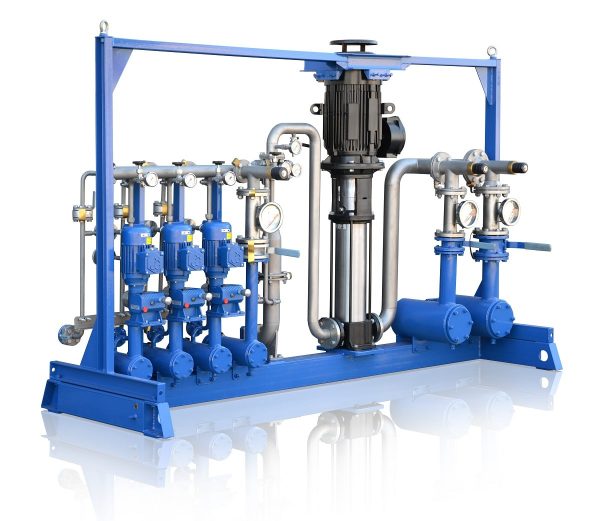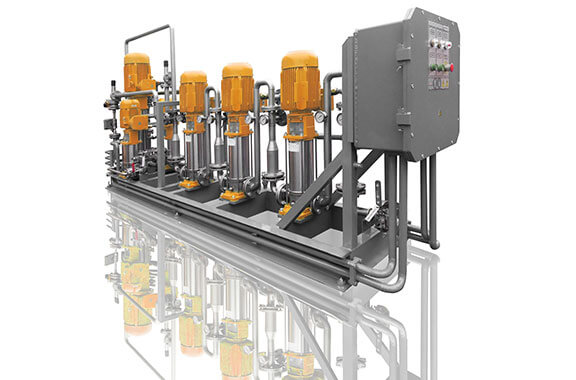The idea for mixing several components is usually to make a new product with new properties and characteristics. In many cases the task is as simple as using a regular mechanical agitator with an electric drive. However, more often than not, we deal with components which mix poorly, in which case a mechanical mixer is not good enough. Therefore, GlobeCore engineers have developed the USB blending unit based on hydrodynamic cavitation technology. The effects of the unit on the processed media are comprehensive, with the use of several devices and phenomena.
The primary physical process in the USB unit is cavitation. Cavitation is the formation of bubbles filled with vapor in a liquid medium. When these bubbles collapse, energy is released, forming shock waves, free radicals and local heating of gas inside the compressed bubbles. Cavitation occurs due to the increased velocity of the liquid, which causes local pressure drop. The effects of cavitation are further enhanced by:
- ultrasonic waves;
- microbursts;
- mechanical shear and collisions due to hundreds of cutting pairs moving at high linear velocity.
The full influence of the above factors allows to separate the processed medium into its particles.
The cavitation in the USB units is created in de Laval nozzles. Cavitation is only possible at high flow rate through the nozzle. A pump creates pressure at nozzle inlet. Since the cross section of the nozzle opening is much smaller than that of the main pipe, fluid velocity increases significantly. Cavitation is facilitated by sharp expansion of the liquid, turbulence in the outgoing stream and friction against nozzle walls.
The USB units are also equipped with Venturi tubes. The design (a pipe with an appendage connected to another pipeline) minimized pressure loss and allows for superfine precision of component portioning, as well as consecutive fine dispersion.
Application of GlobeCore hydrodynamic cavitation technology in the petrochemical industry
The effects of the USB units make this equipment quite efficient for petrochemical applications. For instance, shockwaves break long organic molecules forming new radicals, which results in new compounds and higher yield of light oil products.
Some of the possible applications are:
- processing oil to reduce its viscosity for transportation along pipelines. The treatment also breaks paraffins, reducing sedimentation on pipe walls;
- production of composite fuels, blended gasoline, biofuel, winter diesel etc;
- production of water-fuel emulsions. Adding up to 20% water into heavy fuel oil reduces harmful emissions which result from combustion, and increases boiler efficiency;
- diesel fuel processing to reduce ash content, coking and the size of solid particles, lower the cloud point and improve filtration. The process also increases cetane number.
GlobeCore manufactures USB units that can blend from two to five liquid streams at the rates from 18 to 100 cubic meters per hour. E.g. the USB-20/3 name indicates that this unit can mix two or three liquid streams at 20 cubic meters per hour.
Blends produced with the USB can be stored for 30-180 days (depending on the actual product composition). Composite gasoline, for instance, does not separate in storage for at least 180 days.


 USB-1 Fuel oil ...
USB-1 Fuel oil ... AVS-150 Chemical Mixing ...
AVS-150 Chemical Mixing ... USB-1 Biodiesel equipment
USB-1 Biodiesel equipment